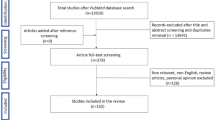Abstract
Atopic dermatitis (AD) is one of the most common chronic inflammatory skin diseases in industrialized countries. To identify candidate genes involved in the pathogenesis of AD, we previously undertook a genome-wide approach using DNA microarrays. A transcript encoding the epidermal growth factor receptor (EGFR) was found to be among the down-regulated transcripts in AD skin. Here, we further investigated the expression pattern of two EGFR family members (EGFR and ErbB2) in AD skin on a protein level. Immunohistochemical (IHC) analysis of EGFR and ErbB2 showed decreased expression of EGFR and ErbB2 proteins in AD lesional skin as compared to skin from healthy individuals. Interestingly, we found that EGFR and ErbB2 were reciprocally expressed in an in vitro model of keratinocyte proliferation and differentiation, paralleling the expression patterns found in epidermis of healthy skin. The highest levels of EGFR transcripts were found in proliferating cells, while ErbB2 was found in differentiated cells. We show that blocking EGFR activity combined with co-stimulation of the Th2-cytokine IL4 in keratinocytes leads to induction of the inflammatory chemokine CCL26/eotaxin-3 in vitro. Accordingly, increased CCL26 transcriptional levels were observed in AD lesional skin. Taken together, suppression of EGFR may contribute to the pathogenesis of AD via the regulation of inflammatory chemokines.




Similar content being viewed by others
References
Belso N, Szell M et al (2008) Differential expression of D-type cyclins in HaCaT keratinocytes and in psoriasis. J Invest Dermatol 128(3):634–642
Bianchini D, Jayanth A et al (2008) Epidermal growth factor receptor inhibitor-related skin toxicity: mechanisms, treatment, and its potential role as a predictive marker. Clin Colorectal Cancer 7(1):33–43
Bieber T (2008) Atopic dermatitis. N Engl J Med 358(14):1483–1494
Gebhardt F, Zanker KS et al (1999) Modulation of epidermal growth factor receptor gene transcription by a polymorphic dinucleotide repeat in intron 1. J Biol Chem 274(19):13176–13180
Huang CL, Yang CH et al (2009) EGFR intron 1 dinucleotide repeat polymorphism is associated with the occurrence of skin rash with gefitinib treatment. Lung Cancer 64(3):346–351
Jost M, Kari C et al (2000) The EGF receptor—an essential regulator of multiple epidermal functions. Eur J Dermatol 10(7):505–510
Kagami S, Kakinuma T et al (2003) Significant elevation of serum levels of eotaxin-3/CCL26, but not of eotaxin-2/CCL24, in patients with atopic dermatitis: serum eotaxin-3/CCL26 levels reflect the disease activity of atopic dermatitis. Clin Exp Immunol 134(2):309–313
Ma F, Sun T et al (2009) Polymorphisms of EGFR predict clinical outcome in advanced non-small-cell lung cancer patients treated with Gefitinib. Lung Cancer 66(1):114–119
Mascia F, Cataisson C et al (2009) EGFR regulates the expression of keratinocyte-derived granulocyte/macrophage colony-stimulating factor in vitro and in vivo. J Invest Dermatol 130(3):682–693
Mascia F, Mariani V et al (2003) Blockade of the EGF receptor induces a deranged chemokine expression in keratinocytes leading to enhanced skin inflammation. Am J Pathol 163(1):303–312
Nanney LB, Magid M et al (1984) Comparison of epidermal growth factor binding and receptor distribution in normal human epidermis and epidermal appendages. J Invest Dermatol 83(5):385–393
Nanney LB, Stoscheck CM et al (1986) Altered [125I] epidermal growth factor binding and receptor distribution in psoriasis. J Invest Dermatol 86(3):260–265
Owczarek W, Paplinska M et al (2010) Analysis of eotaxin 1/CCL11, eotaxin 2/CCL24 and eotaxin 3/CCL26 expression in lesional and non-lesional skin of patients with atopic dermatitis. Cytokine 50(2):181–185
Pastore S, Mascia F et al (2008) The epidermal growth factor receptor system in skin repair and inflammation. J Invest Dermatol 128(6):1365–1374
Pivarcsi A, Szell M et al (2001) Serum factors regulate the expression of the proliferation-related genes alpha5 integrin and keratin 1, but not keratin 10, in HaCaT keratinocytes. Arch Dermatol Res 293(4):206–213
Pullman H (1978) The pathogenesis of psoriasis. Autoradiographic in vitro studies on cell proliferation in psoriasis vulgaris and other normal and hyperproliferative states of epidermal and dermal human cells. Fortschr Med 96(25):1335–1338
Sipples R (2006) Common side effects of anti-EGFR therapy: acneform rash. Semin Oncol Nurs 22(1 Suppl 1):28–34
Sääf AM, Tengvall-Linder M et al (2008) Global expression profiling in atopic eczema reveals reciprocal expression of inflammatory and lipid genes. PLoS ONE 3(12):e4017
Williams HC, Burney PG et al (1994) The UK working party’s diagnostic criteria for atopic dermatitis. III Independent hospital validation. Br J Dermatol 131(3):406–416
Yarden Y (2001) The EGFR family and its ligands in human cancer. Signalling mechanisms and therapeutic opportunities. Eur J Cancer 37(Suppl 4):S3–S8
Acknowledgments
We wish to thank Anna-Lena Kastman and Sigrid Sahlen for excellent assistance and technical help. This work was supported by the Edward Welander-Finsen Foundation, the Swedish Asthma and Allergy Association and through the regional agreement on medical training and clinical research (ALF) between the Stockholm County Council and Karolinska Institutet.
Author information
Authors and Affiliations
Corresponding author
Rights and permissions
About this article
Cite this article
Sääf, A., Pivarcsi, A., Winge, M.C.G. et al. Characterization of EGFR and ErbB2 expression in atopic dermatitis patients. Arch Dermatol Res 304, 773–780 (2012). https://doi.org/10.1007/s00403-012-1242-4
Received:
Revised:
Accepted:
Published:
Issue Date:
DOI: https://doi.org/10.1007/s00403-012-1242-4




